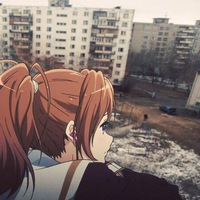
Лёгкий вопрос1В каком распался советский союз.2И иза кого.
 0
0
 0
0
Ответы на вопрос
 Внимание! Ответы на вопросы дают живые люди. Они могут содержать ошибочную информацию, заблуждения, а также ответы могут быть сгенерированы нейросетями. Будьте внимательны. Если вы уверены, что ответ неверный, нажмите кнопку "Пожаловаться" под ответом.
Внимание! Ответы на вопросы дают живые люди. Они могут содержать ошибочную информацию, заблуждения, а также ответы могут быть сгенерированы нейросетями. Будьте внимательны. Если вы уверены, что ответ неверный, нажмите кнопку "Пожаловаться" под ответом.

Ответ:
25 декабря 1991 года президент СССР Михаил Горбачёв сложил свои полномочия, а на следующий день, 26 декабря 1991 года, Совет Республик Верховного Совета СССР принял декларацию о прекращении существования СССР.
 0
0
 0
0

Ответ: 1991
Перестройка
Объяснение:
 0
0
 0
0

The Dissolution of the Soviet Union
The Soviet Union, officially known as the Union of Soviet Socialist Republics (USSR), dissolved on December 26, 1991. The dissolution of the Soviet Union was a complex process that involved various factors and events.
1. Causes of the Dissolution: There were several factors that contributed to the dissolution of the Soviet Union. These include:
- Economic Problems: The Soviet economy was facing severe challenges, including stagnation, inefficiency, and a lack of innovation. The centrally planned economy was unable to keep up with the demands of a rapidly changing world. - Nationalism and Ethnic Conflicts: Nationalism and ethnic tensions within the Soviet Union played a significant role in its dissolution. The various republics within the Soviet Union sought greater autonomy and independence, leading to conflicts and demands for self-determination. - Political Reforms: The political reforms initiated by Soviet leader Mikhail Gorbachev, such as glasnost (openness) and perestroika (restructuring), inadvertently contributed to the dissolution of the Soviet Union. These reforms led to increased political freedom and the opening up of public discourse, which further fueled nationalist sentiments and demands for independence. - Collapse of the Eastern Bloc: The collapse of the Eastern Bloc countries, such as Poland, Hungary, and East Germany, in the late 1980s weakened the Soviet Union's influence and control over its satellite states. This further eroded the Soviet Union's power and authority. - Desire for Democracy: The desire for democracy and political freedom among the people of the Soviet Union also played a role in its dissolution. The Soviet people, inspired by the democratic movements in other parts of the world, demanded greater political participation and an end to the one-party rule.
2. Immediate Triggers: The immediate triggers for the dissolution of the Soviet Union were:
- August Coup: In August 1991, a group of hardline Communist Party members attempted a coup against Soviet leader Mikhail Gorbachev. The coup failed, but it further weakened the central government and accelerated the process of dissolution. - Independence Movements: The independence movements in the Baltic republics of Estonia, Latvia, and Lithuania gained momentum in the late 1980s and early 1990s. These republics declared their independence from the Soviet Union, which was a significant blow to its territorial integrity. - Belavezha Accords: On December 8, 1991, the leaders of Russia, Ukraine, and Belarus signed the Belavezha Accords, which declared the dissolution of the Soviet Union and established the Commonwealth of Independent States (CIS) as its successor.
3. Key Figures: Several key figures played significant roles in the dissolution of the Soviet Union. These include:
- Mikhail Gorbachev: As the General Secretary of the Communist Party of the Soviet Union and the President of the Soviet Union, Gorbachev implemented political and economic reforms that inadvertently contributed to the dissolution of the Soviet Union. - Boris Yeltsin: Yeltsin, the President of the Russian Federation, emerged as a prominent figure during the dissolution process. He played a crucial role in opposing the August Coup and advocating for the independence of the republics. - Leaders of the Republics: The leaders of the various Soviet republics, such as Estonia's Lennart Meri, Latvia's Anatolijs Gorbunovs, and Lithuania's Vytautas Landsbergis, were instrumental in pushing for independence and contributing to the dissolution of the Soviet Union.
4. Aftermath: The dissolution of the Soviet Union had far-reaching consequences. The newly independent states faced numerous challenges, including economic restructuring, political transitions, and the establishment of new institutions. Russia emerged as the largest successor state of the Soviet Union, while other republics became independent nations.
 0
0
 0
0
Похожие вопросы
Топ вопросов за вчера в категории История
Последние заданные вопросы в категории История
-
Математика
-
Литература
-
Алгебра
-
Русский язык
-
Геометрия
-
Английский язык
-
Химия
-
Физика
-
Биология
-
Другие предметы
-
История
-
Обществознание
-
Окружающий мир
-
География
-
Українська мова
-
Информатика
-
Українська література
-
Қазақ тiлi
-
Экономика
-
Музыка
-
Право
-
Беларуская мова
-
Французский язык
-
Немецкий язык
-
МХК
-
ОБЖ
-
Психология
-
Физкультура и спорт
-
Астрономия
-
Кыргыз тили
-
Оʻzbek tili

























